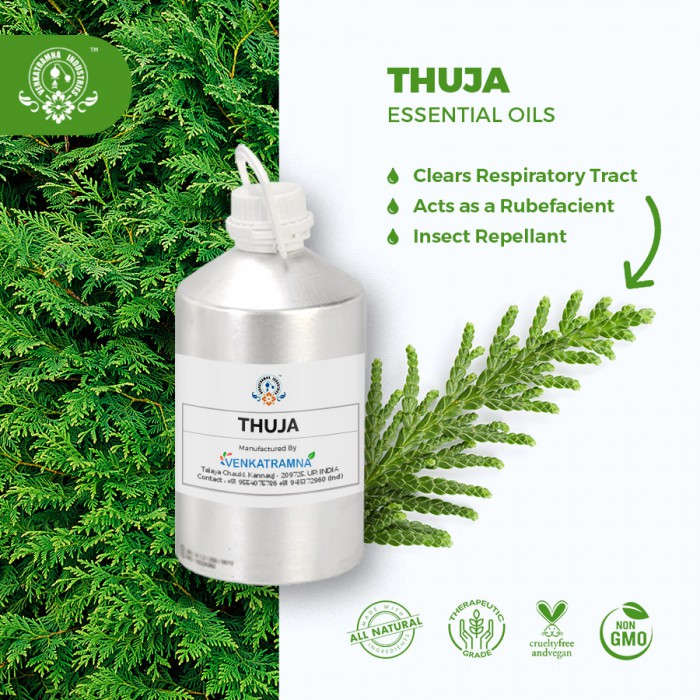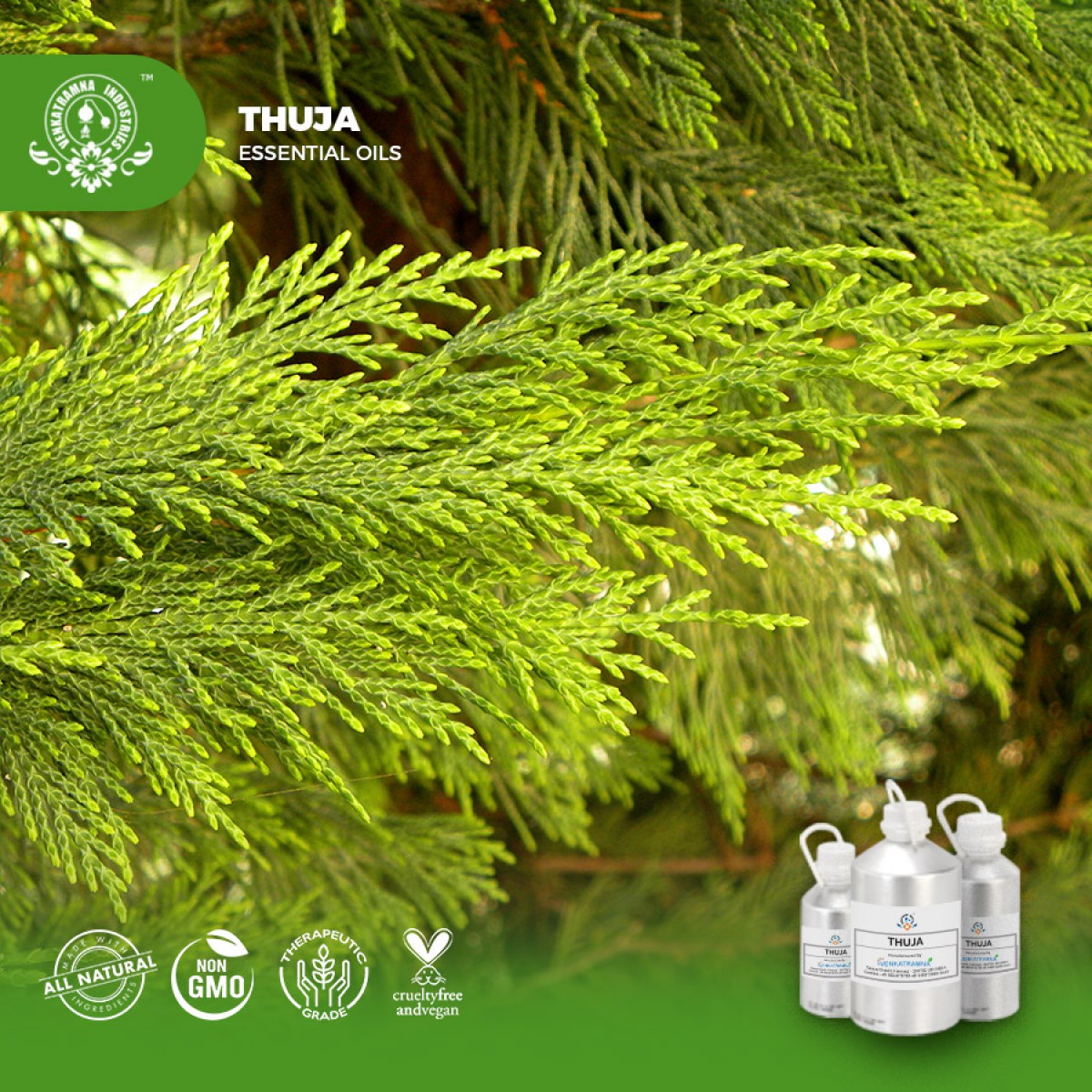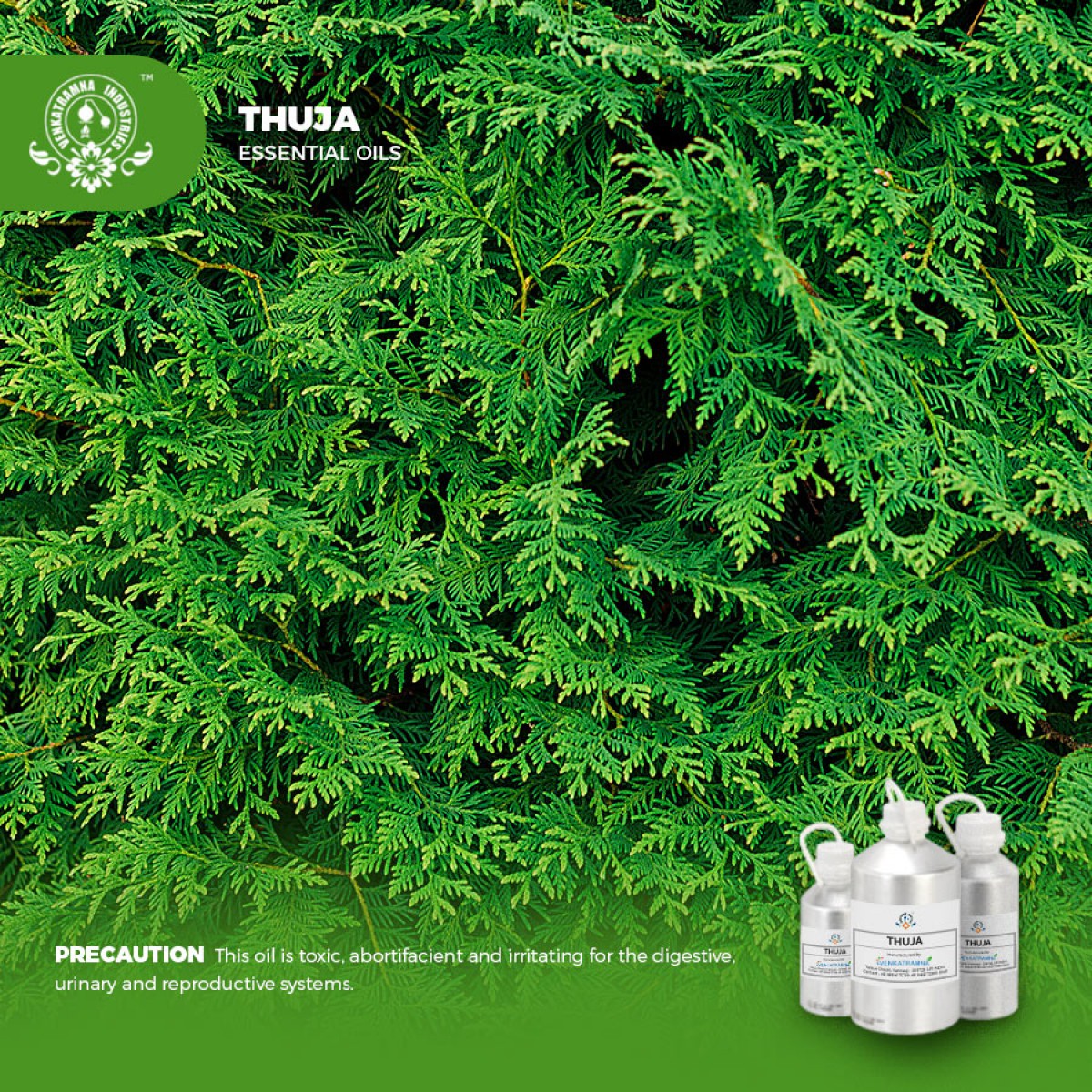Botanical Name: Thuja occidentalis Common name: Cedar leaf, white cedar, eastern white Read More
|
Botanical Name: |
Thuja occidentalis |
|
Common name: |
Cedar leaf, white cedar, eastern white cedar, eastern arborvitae,
swamp cedar |
|
Plant family: |
Cupressaceae |
|
Genus: |
Thuja |
|
Appearance/Color: |
Colorless to
pale yellow liquid |
|
Odor: |
The aroma is
camphoraceous, fresh, green and herbal agrestic. |
|
Blends With: |
Armoise,
cedarwood, lemon, lavender, pine |
|
Origin |
North America |
|
Source |
Leaves and
Terminal Branches |
|
Method of
Extraction |
Steam Distillation |
Cedar trees in general have a
long history of use for furniture and buildings as well as in various herbal
remedies and aromatherapy preparations. According to the Old Testament, King
Hiram of Tyre sent cedar wood from Lebanon to King Solomon for the construction
of the Temple in Jerusalem. Cedar wood has also been used for centuries to line
closets or make chests to protect clothing from moths. The fragrant wood was
also used by Native Americans as well as the ancient Egyptians, Greeks, and
Romans as an ingredient in incense blends.
Thuja is a genus of
coniferous trees in the Cupressaceae (cypress) family. There are five species
in the genus, two natives to North America and three native to eastern Asia.
The genus is monophyletic and sister to Thujopsis. They are commonly known
as arborvitaes (from Latin for tree of life) or Thujas; several species are
widely known as cedar but, because they are not true cedars (Cedrus), it
has been recommended to call them red-cedars or white-cedars.
Thuja occidentalis, commonly known as Arbor vitae or white cedar, is indigenous to eastern North America and is grown in Europe as an ornamental tree. The plant was first identified as a remedy by native Indians in Canada during a 16th century expedition and was found to prove effective in the treatment of weakness from scurvy. In folk medicine, Thuja occ has been used to treat bronchial catarrh, enuresis, cystitis, psoriasis, uterine carcinomas, amenorrhea and rheumatism. Today, it is mainly used in homeopathy as mother tincture or dilution. In combination with other immunomodulating plants, such as Echinacea purpurea, Echinacea pallida and Baptisia tinctoria, this medicinal plant is also used as evidence-based phytotherapy for acute and chronic infections of the upper respiratory tract, and as an adjuvant to antibiotics in severe bacterial infections such as bronchitis, angina, pharyngitis, otitis media and sinusitis.
DISCLAIMER
The complete range of conditions
or methods of use are beyond our control therefore we do not assume any
responsibility and expressly disclaim any liability for any use of this
product. Information contained herein is believed to be true and accurate however,
all statements or suggestions are made without warranty, expressed or implied,
regarding accuracy of the information, the hazards connected with the use of
the material or the results to be obtained from the use thereof. Compliance
with all applicable federal, state, and local laws and local regulations
remains the responsibility of the user.
The FDA has not evaluated the
statements on this website. No claims are made by Venkatramna Industries as to
the medicinal value of any products from vriaroma.com or by us. The information
presented here is for educating our customers about the traditional uses of
essential oils and is not intended to diagnose, treat, cure, or prevent any
disease. You are responsible for understanding the safe application of these products.
If you have any questions, please call or email us for further information.
As per NAHA guidelines, New Directions Aromatics
(NDA) does not recommend the ingestion of essential oils. It is imperative to
consult a medical practitioner before using Essential Oils for therapeutic
purposes. Pregnant and nursing women and those taking prescription drugs are
especially advised not to use this product without the medical advice of a
physician. The oil should always be stored in an area that is inaccessible to
children, especially those under the age of 7.
In Western herbal medicine,
cedar leaf oil was used as an emmenagogue, abortifacient, vermifuge, diuretic,
and digestive aid. It was applied externally to relieve the pains of arthritis
and rheumatism, to treat external fungal infections of the skin
(ringworm and thrush), and to remove anal or genital warts . Native
Americans used cedar leaf preparations to relieve headache and
to prevent scurvy. Cedar leaves and twigs are in fact rich in vitamin
C , and it was their effectiveness in preventing or treating scurvy that
led to the tree's being called arbor vitae or tree of life. In addition, recent
research has shown that extracts prepared from either Thuja
occidentalis or Thuja plicata do in fact have antiviral,
anti-inflammatory, and antibacterial properties. A group of German researchers
reported in 2002 that an extract prepared from cedar leaf, alcohol, and water
inhibits the reproduction of influenza virus type A, while a team of
researchers in Japan found that an extract of Western red cedar was effective
in treating eczema . Lastly, another group of Japanese researchers
reported in 2003 that several compounds isolated from the stem bark of Japanese
cedar appear to have significant antitumor activity.
In traditional Chinese
medicine, the leaves, and stems of Thuja orientalis are used to treat
nervous disorders, insomnia, and heart palpitations, as well as to stop
hemorrhages and bring down fevers. Traditional Chinese physicians also make a
preparation of fresh cedar leaves steeped for seven days in a 60% alcohol
solution to promote hair growth. The mixture is rubbed on the bald spots three
times daily.
The homeopathic preparation known
as Thuja is made from the leaves of Thuja occidentalis and is
given to treat soft or bleeding warts on the chin, genitals, or anus.
The most widely used homeopathic materia medica, or reference book, also
recommends Thuja for headaches that feel like a nail is being driven
into the head; vertigo brought on by standing up;
emotional depression and
restlessness; pain or itching in the scalp; painful
swallowing or a feeling of obstruction in the throat; intense thirst at night
or early in the morning; stomach cramps that are worse in the evening;
difficulty in breathing combined with a violent thirst for cold water; frequent
need to urinate, with frothy or cloudy urine; insomnia or restless sleep;
or fever and chills that grow worse toward evening.
In aromatherapy,
cedar leaf oil is classified as a base note, which means that it has a very
long-lasting scent when added to a perfume or incense blend. One Canadian
producer of essential oil advises, "… the scent is strong and should
be used sparingly. One small application is all you need!" It is
considered to have a sedative or calming effect, and is recommended for
treating anxiety states as well as asthma, bronchitis, and head
colds. Some aromatherapists also recommend cedar leaf oil for
treating acne and dandruff.
COMMON USAGE
·
Common cold.
·
Stimulating immune function.
·
Bronchitis.
·
Pneumonia.
·
Skin infections.
·
Nerve pain.
·
Strep throat.
·
Abortions.
·
Osteoarthritis.
·
Joint pain.
·
Muscle aches.
·
Skin diseases.
·
Cancer.
·
Warts.
·
Use as an insect repellent.
Ingredients:
|
S.No |
Key Constituents |
Strength (%) |
|
1 |
a-thujone |
48.7-51.5 |
|
2 |
Fenchone |
12.2-12.8 |
|
3 |
b-thujone |
7.9-9.9 |
|
4 |
Sabinene |
1.8-4.4 |
|
5 |
Bornyl acetate |
2.3-3.2 |
|
6 |
Camphor |
2.2-2.5 |
|
7 |
Terpinen-4-ol |
1.5-2.5 |
|
8 |
b-myrcene |
1.8-2.1 |
|
9 |
a-pinene |
1.6-1.8 |
|
10 |
a-terpinyl acetate |
1.0-1.8 |
|
11 |
(p)-limonene |
1.4-1.6 |
|
12 |
a-fenchene |
1.1-1.2 |
Safety Summary
·
Hazardous No Data
·
Contraindications Not Known
Organ Specific Effects
·
Adverse skin reactions: undiluted cedar leaf
oil was moderately irritating to rabbits, but was not irritating to mice,
tested at 4% on 25 volunteers it was neither irritating nor sensitizing. It is
non-phototoxic.
Systemic Effects
·
Chronic toxicity: May cause allergic
reactions on skin.
·
Inhalation: Inhalation of high
concentrations of vapor may result in irritation of eyes, nose and throat,
headache, nausea, and dizziness.
·
Skin contact: Adverse skin effects should
be prevented by normal care and personal hygiene.
·
Eye contact: Possible irritation should
be prevented by wearing safety glasses.
·
Ingestion: Low order toxicity causing
irritation of the stomach and intestines which results in nausea and vomiting
·
Repeated exposure: Repeated or prolonged
contact may cause redness, irritation and scaling of skin (Dermatitis).
·
Toxic to aquatic organisms, may cause long-term
adverse effects environment. Avoid any pollution of ground, surface or
underground water.
·
Persistence and degradability Biodegradation is
expected.
·
Bio-accumulative potential No Data available.
·
Mobility in soil Unknown





 PS-Thuja.pdf
PS-Thuja.pdf




